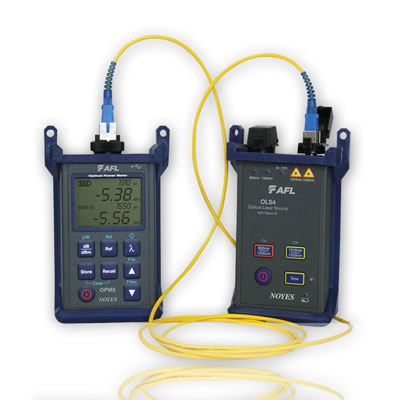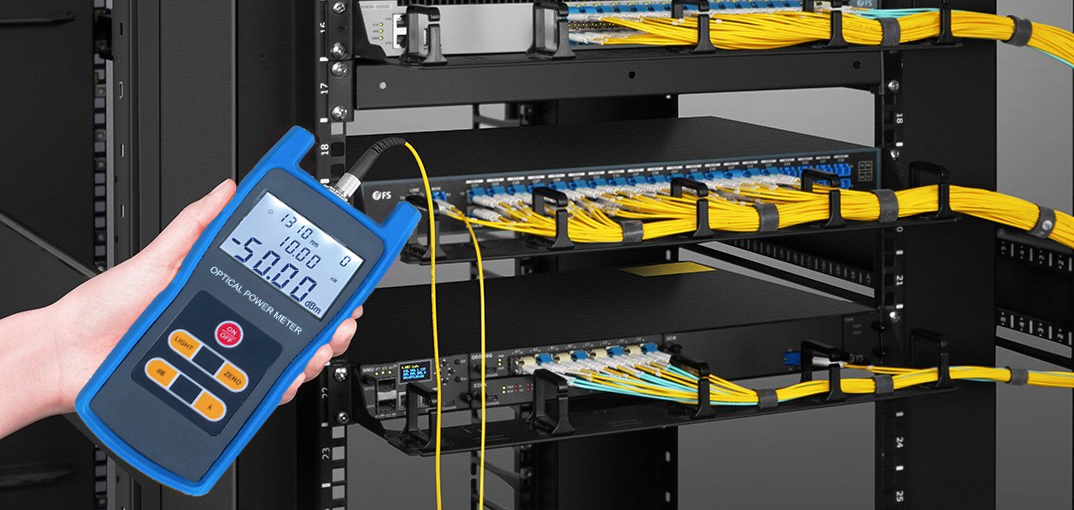Improve efficiency with state-of-the-art robotic vision systems.
Wiki Article
Discover the Value of Optical Fibre Testing in Modern Telecommunications
In the world of modern-day telecoms, the value of optical fiber screening can not be overemphasized, as it serves as the backbone for guaranteeing network dependability and efficiency. What are the details benefits that regular screening deals, and how might it shape the future landscape of telecommunications?
Comprehending Optical Fiber Testing
Optical fiber testing is a vital process in telecoms that makes sure the integrity and performance of fibre optic networks. This testing encompasses a series of procedures developed to review the physical and functional attributes of optical fibres - optical fibre diameter analyser. Secret specifications assessed include optical power loss, data transfer capacity, and mistake area, which are essential for maintaining top quality communication web linksThe testing process commonly includes making use of specialized devices such as Optical Time-Domain Reflectometers (OTDR) and Optical Power Meters. OTDRs are employed to determine and characterize mistakes, interlaces, and connectors within the fiber, while power meters measure the transmitted light signal toughness to determine effectiveness.
Additionally, testing is performed at numerous stages, consisting of during installation, maintenance, and troubleshooting, to make certain that the network meets market standards and functional requirements. Conformity with standards established by organizations like the International Telecommunication Union (ITU) and the Telecommunications Industry Association (TIA) is extremely important.
Benefits of Routine Checking
Routine screening of optical fibers yields countless advantages that dramatically boost network integrity and efficiency. Among the key benefits is the early detection of prospective problems, such as breaks or degradation in the fibre, which can cause pricey downtime if left unaddressed (optical fibre diameter analyser). By determining these troubles proactively, telecoms providers can lessen solution interruptions and make certain regular connectivity for their clientsIn addition, normal testing helps to keep the stability of signal top quality. As optical fibres age, their efficiency can be influenced by aspects such as environmental conditions and physical anxiety. Routine assessments allow for the surveillance of signal loss and total transmission efficiency, making sure that the network operates at optimal levels.
Another significant benefit is conformity with market requirements. Normal testing sustains adherence to regulative requirements, thereby alleviating legal and financial risks associated with non-compliance. In addition, it improves the general life-span of the fiber framework by helping with prompt maintenance and repairs.

Typical Evaluating Techniques
Examining optical fibers employs numerous methods to make certain the honesty and efficiency of telecoms networks. Amongst one of the most common methods is Optical Time Domain Reflectometry (OTDR), which analyzes the entire length of the fiber by sending a pulse of light and determining the representations caused by blemishes or breaks. This method offers comprehensive information concerning the place and severity of faults.One more common approach is making use of Optical Power Meters, which measure the quantity of light transmitted with the fiber. This strategy helps establish the loss of signal strength, making sure that it satisfies sector standards. Furthermore, Visual Fault Locators (VFL) are employed to recognize breaks or severe bends in the fiber by forecasting a visible laser light into the cable.
Insertion loss screening is likewise essential, as it quantifies the loss of signal power arising from connections and mates within the network. Moreover, using Polarization Mode Dispersion (PMD) screening assesses the effect of fiber features on signal integrity.
Each of these approaches plays a vital role in maintaining the performance and integrity of optical fibre networks, inevitably adding to smooth telecoms operations.
Effect On Network Performance
The honesty and performance of optical fiber networks directly affect overall network performance. In modern telecommunications, the effectiveness of information transmission depends greatly on the high quality of the optical fibres utilized. Any type of destruction in the fiber's condition-- whether because of physical damages, contamination, or excessive bending-- can result in increased attenuation and signal loss, substantially impacting information stability and speed.Routine optical fiber testing is necessary to recognize and remedy prospective issues prior to they manifest as network failures or stagnations. Strategies such as Optical Time Domain Reflectometry (OTDR) and insertion loss testing enable specialists to determine the performance of fiber links properly. These tests not only review the physical condition of the fibers however additionally guarantee conformity with sector requirements, thereby protecting the network's dependability.
Moreover, a properly maintained optical fiber network adds to minimized functional costs and improved consumer fulfillment, as end-users experience less interruptions and greater information rates. Ultimately, the focus on rigorous optical fibre testing techniques functions as a keystone for sustaining robust telecommunications infrastructure, making certain that provider can fulfill the growing demands for data transfer and connectivity in today's digital age.
Future Patterns in Evaluating
As we look in advance, improvements in innovation are poised to reshape optical fibre screening in telecommunications. The increase of automation and fabricated intelligence (AI) is anticipated to boost the efficiency and precision of screening procedures. Automated testing systems can perform thorough evaluations with marginal human treatment, considerably reducing the possibility for errors and speeding up time-to-deployment.Furthermore, the assimilation of maker understanding algorithms will certainly make it possible for predictive upkeep, enabling network companies to visualize possible concerns before they intensify right into failings. This proactive approach not just improves network reliability however additionally optimizes functional expenses.
One more emerging fad is the development of mobile screening devices that provide real-time analysis - robotic vision. These gadgets will certainly equip service technicians to carry out on-site diagnostics quickly, facilitating quicker resolutions and enhancing service top quality
The development of 5G networks further requires the advancement of testing methods. As data transfer demands increase, conventional screening methods might no more are adequate. Cutting-edge services such as optical time-domain reflectometry (OTDR) and advanced spooky analysis will certainly come to be important in making sure the stability and performance of high-speed connections.

Conclusion
Finally, optical fiber testing is vital for guaranteeing the honesty and integrity of modern telecommunications networks. Routine screening practices not only assist determine prospective issues such as signal loss and mistakes but likewise add to improved network performance and customer satisfaction. As the need for seamless connection proceeds to expand, ofda the fostering of advanced screening techniques will play a crucial duty in maintaining high-grade network standards and supporting the progressing landscape of telecommunications.Report this wiki page